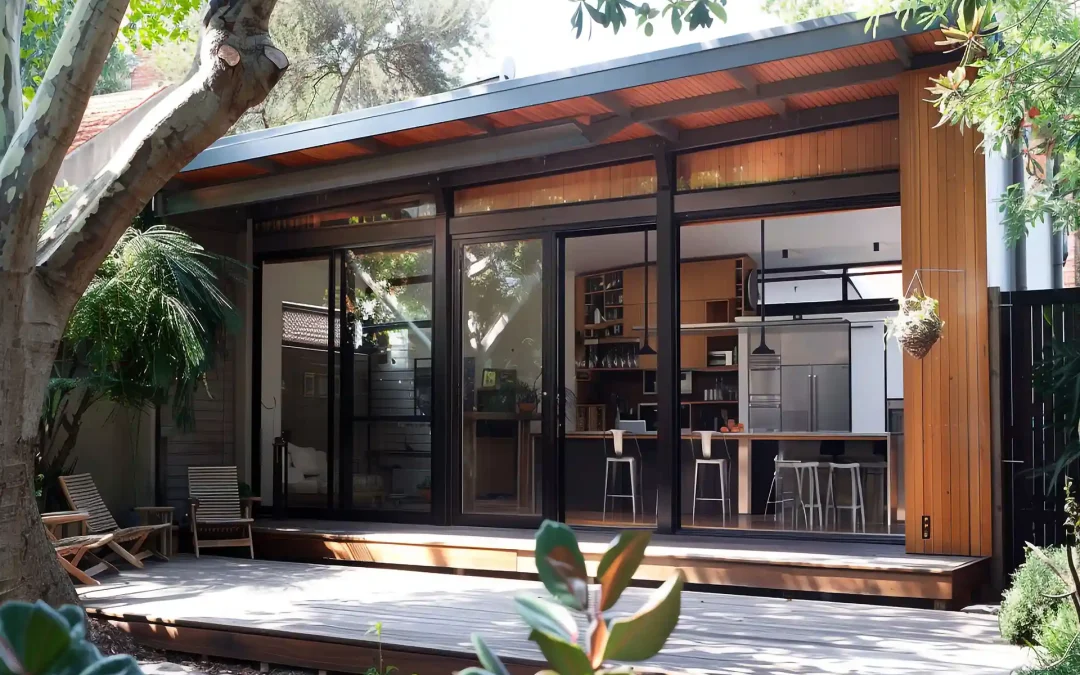When considering home improvement projects in the UK, one of the first questions that comes to mind is, “What can I build without planning permission?” Fortunately, there are many options available for homeowners under Permitted Development Rights (PDR), allowing you to make certain improvements without the need for formal planning approval. This guide will explore what you can build without planning permission, helping you navigate the rules and get started on your project.
Extensions
One of the most popular projects that can be done without planning permission is extending your home. Under Permitted Development, you can build:
• Single-Storey Rear Extensions: You can extend your home at the rear by up to 8 metres for a detached house and 6 metres for a semi-detached or terraced house, provided the extension is no taller than 4 metres.
• Side Extensions: Single-storey side extensions are allowed if they are no more than half the width of the original house and do not exceed 4 metres in height.
These extensions must be constructed using similar materials to the original house, and the total area covered by the extension must not exceed 50% of the land around the original house.
Loft Conversions
Loft conversions are a great way to add extra living space to your home without the need for planning permission. You can convert your loft under Permitted Development as long as:
• The additional roof space does not exceed 40 cubic metres for terraced houses or 50 cubic metres for detached and semi-detached houses.
• No extension is higher than the existing roof.
• The conversion does not include a balcony, veranda, or raised platform.
Windows in the side elevation must be obscure-glazed and non-opening if they are less than 1.7 metres above the floor.
Outbuildings
Building without planning permission is possible when it comes to outbuildings such as garages, sheds, greenhouses, and garden offices. The rules for outbuildings include:
• Size and Height: Outbuildings must be single-storey and not exceed a height of 4 metres if they have a dual-pitched roof, or 3 metres for other roof types. If the building is within 2 metres of the property boundary, the maximum height allowed is 2.5 metres.
• Usage: The outbuilding must be for purposes incidental to the enjoyment of the dwelling, such as a home office, gym, or storage space.
• Coverage: Outbuildings must not cover more than 50% of the garden area.
These structures cannot be used as self-contained living accommodation, as this would require planning permission.
Porches
You can add a porch to your home without planning permission, provided it meets the following criteria:
• The ground area does not exceed 3 square metres.
• No part of the porch is higher than 3 metres.
• The porch is not within 2 metres of any boundary facing a road.
Porches that adhere to these guidelines are typically exempt from planning permission, making them a quick and easy way to enhance your home’s entrance.
Fences, Walls, and Gates
Fences, walls, and gates are another example of building without planning permission. You can erect them without permission if:
• The structure is no more than 1 metre high if adjacent to a highway used by vehicles or 2 metres high elsewhere.
• The fence, wall, or gate does not form part of a listed building or is within the curtilage of a listed building.
Higher fences or those within designated areas, such as conservation areas, may require planning permission.
Solar Panels
With the push for greener energy solutions, many homeowners are considering solar panels. You can install solar panels without planning permission if:
• They do not protrude more than 200mm from the wall or roof slope.
• They are not installed on a building within a conservation area or on a listed building without special permission.
This makes solar panels a viable option for many households looking to reduce energy costs and their carbon footprint.
Driveways and Patios
Creating a driveway or patio is often possible without planning permission:
• Driveways: If the driveway is made of permeable materials or if provisions are made for water to drain off into a permeable area, no planning permission is needed.
• Patios: As long as they are at ground level and do not affect the house’s drainage system, patios generally do not require planning permission.
What If You’re Unsure?
Even though many building projects can be done without planning permission under Permitted Development Rights, it’s always a good idea to check with your local planning authority. They can confirm whether your project meets the necessary criteria or if planning permission is required.
Knowing what you can build without planning permission gives you the freedom to enhance your property with minimal hassle. From small extensions and loft conversions to outbuildings and driveways, there are numerous ways to improve your home without navigating the planning process. However, always check the specific regulations that apply to your property, especially if you live in a designated area or your building plans exceed standard limits. By understanding the rules, you can confidently embark on your building project and add value to your home.
This guide has shown that building without planning permission is not only possible but can also open the door to a range of exciting home improvements. Whether you’re expanding your living space, adding functionality to your garden, or increasing your property’s energy efficiency, you can do so with ease under Permitted Development Rights.
